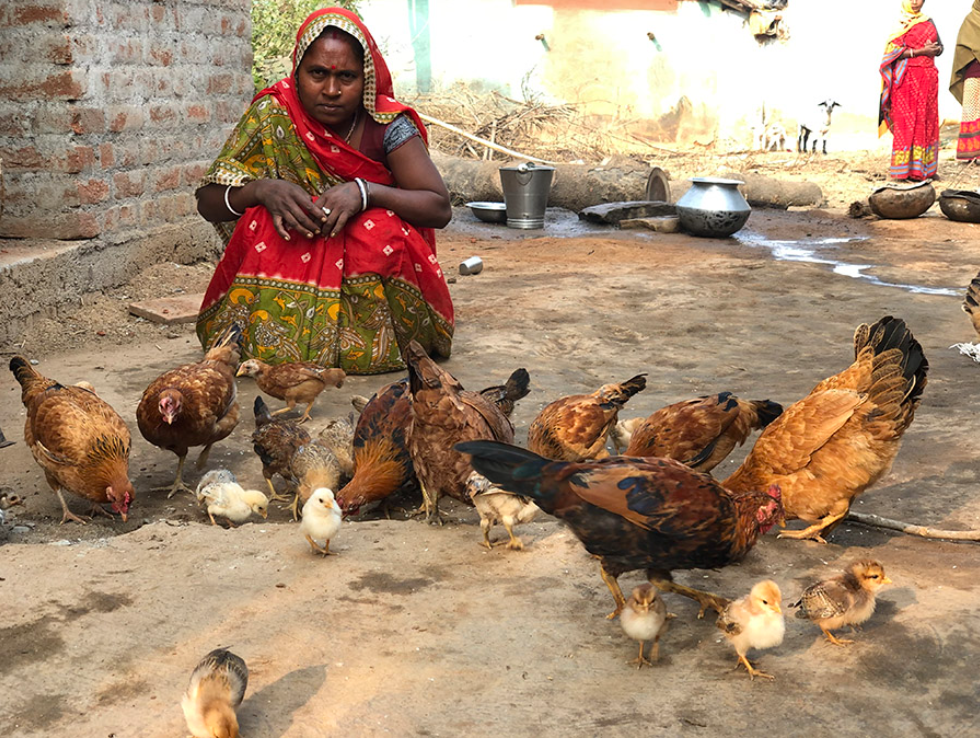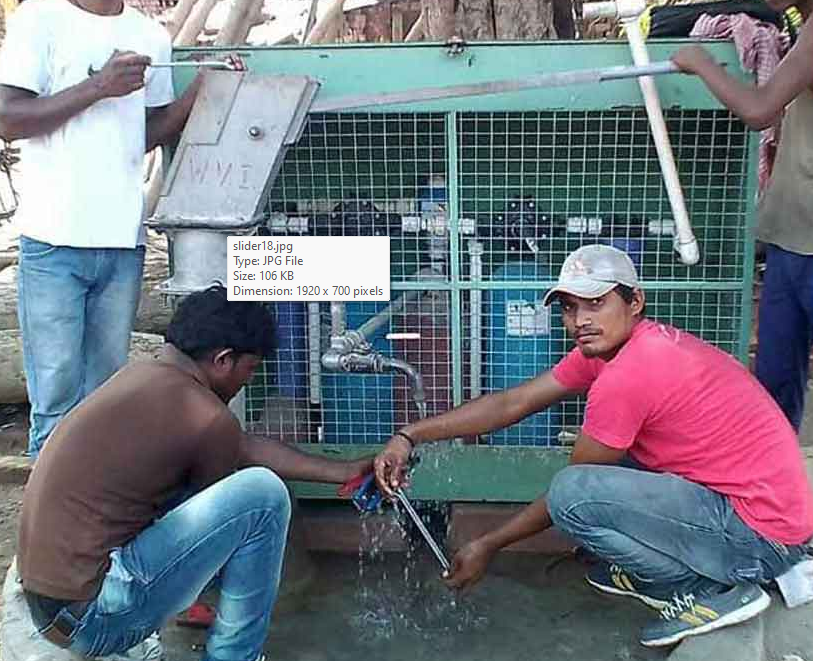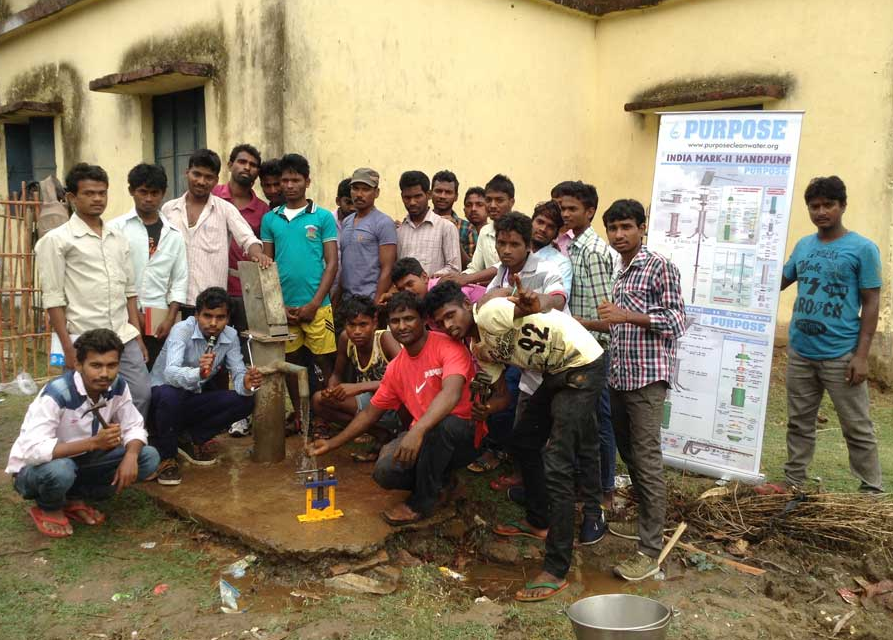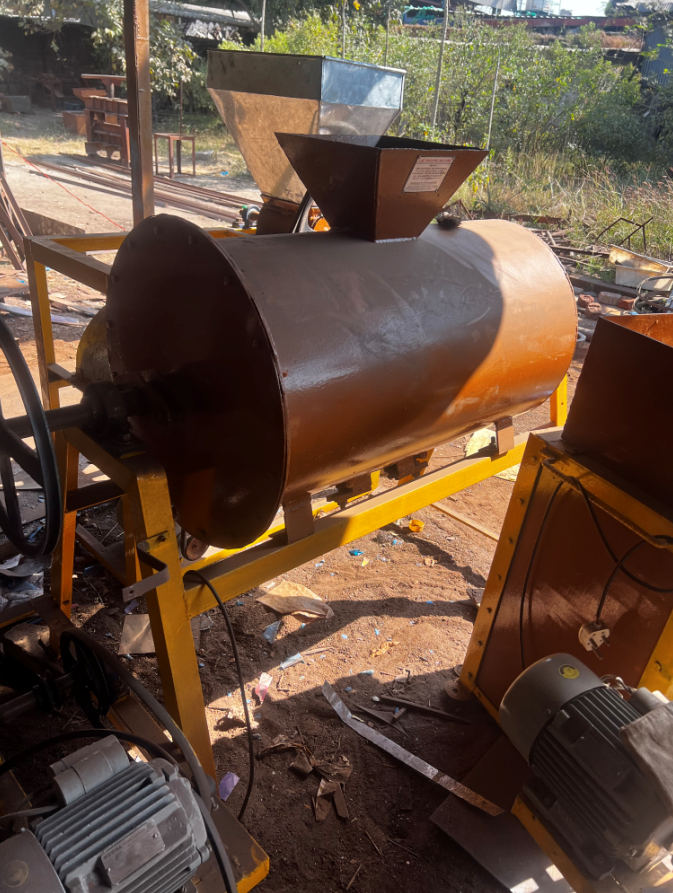Livelihood
Ddressing these livelihood challenges requires a comprehensive approach that includes creating employment opportunities through economic growth, promoting inclusive and sustainable development, investing in skill development and vocational training, ensuring social protection for vulnerable populations, and addressing gender and social inequalities. Additionally, improving access to finance, promoting entrepreneurship, and strengthening rural livelihoods can contribute to sustainable livelihood development in India.
Lac Entrepreneurship
"Lac entrepreneurship" refers to the business activities and initiatives related to the cultivation, processing, and commercialization of lac, a resinous substance obtained from the lac insect (Kerria lacca). Lac is commonly used to produce shellac, a natural resin widely used in various industries, including food, pharmaceuticals, cosmetics, and inks.
Here are some key aspects and opportunities related to lac entrepreneurship:
1. Lac Cultivation: Lac cultivation involves rearing the lac insects on host trees, primarily on the branches of certain tree species, such as Palas (Butea monosperma) and Kusum (Schleichera oleosa). The insects secrete a resinous substance that forms a protective cocoon-like structure around them. Lac farmers manage the cultivation process, including selecting suitable host trees, providing proper conditions for insect growth, and harvesting the lac resin.
2. Lac Processing: Once the lac resin is harvested, it undergoes processing to produce various forms of shellac, such as seedlac, sticklac, and shellac flakes. The processing involves cleaning, filtering, and heating the resin to remove impurities and create different grades of shellac suitable for different industries.
3. Shellac Production and Trading: Lac entrepreneurs engage in the production and trading of shellac products. Shellac is widely used as a natural resin and binder in products like varnishes, coatings, sealants, and as a glazing agent in the food industry.
4. Value Addition and Diversification: Lac entrepreneurs can explore opportunities for value addition and diversification of lac-based products. They may develop new formulations, applications, or derivatives of shellac to cater to different market demands.
5. Export Opportunities: The global demand for natural and eco-friendly products is increasing, providing export opportunities for lac entrepreneurs to reach international markets with their shellac products.
6. Employment Generation: Lac entrepreneurship can create employment opportunities, especially in rural areas where lac cultivation and processing take place. It can contribute to rural livelihoods and economic development.
7. Sustainable and Eco-Friendly Business: Lac entrepreneurship aligns with the principles of sustainability and eco-friendliness. Lac is a natural, renewable resource, and its cultivation does not require harmful chemicals or extensive land use.
8. Research and Innovation: Continuous research and innovation in lac cultivation, processing, and product development can lead to improved efficiency and quality in the lac industry.
9. Government Support: Governments may provide support and incentives to encourage lac entrepreneurship, including financial assistance, technical guidance, and market linkages.
It is important for lac entrepreneurs to adhere to ethical and sustainable practices in lac cultivation and processing to ensure the long-term viability of this industry. Moreover, promoting lac entrepreneurship can contribute to the conservation of lac insect habitats and biodiversity, which are crucial for the overall ecosystem health.
Tamarind Entrepreneurship
Tamarind entrepreneurship refers to business activities and initiatives related to the cultivation, processing, and commercialization of tamarind (Tamarindus indica) and its products. Tamarind is a tropical fruit-bearing tree known for its tangy and sweet-sour pulp, which is widely used in various culinary applications and traditional medicine. Tamarind-based products have a global market and are used in food, beverage, and pharmaceutical industries.
Here are some key aspects and opportunities related to tamarind entrepreneurship:
1. Tamarind Cultivation: Tamarind entrepreneurship starts with tamarind cultivation. Tamarind trees are well-suited to tropical and subtropical regions, and they can thrive in a variety of soils. Entrepreneurs may engage in tamarind farming, selecting suitable land, planting and maintaining tamarind trees, and managing the orchards.
2. Tamarind Processing: Once the tamarind pods are harvested, they undergo processing to extract the pulp. Tamarind processing involves removing the outer shell and seeds to obtain the edible pulp. The pulp can be further processed into various forms, such as tamarind paste, tamarind concentrate, tamarind powder, and tamarind juice.
3. Tamarind-Based Food Products: Tamarind entrepreneurs can develop a range of food products using tamarind pulp or tamarind-based ingredients. Tamarind is commonly used in sauces, chutneys, pickles, snacks, candies, and as a flavoring agent in various dishes.
4. Tamarind Beverages: Tamarind juice or concentrate can be used to create tamarind-based beverages, such as tamarind drinks, fruit juices, and tamarind-flavored sodas.
5. Tamarind in Pharmaceuticals: Tamarind has potential medicinal properties, and its extracts are used in traditional medicine. Tamarind entrepreneurs may explore opportunities in the pharmaceutical and herbal medicine industries.
6. Export Opportunities: Tamarind products have a global demand, presenting export opportunities for tamarind entrepreneurs to reach international markets.
7. Value Addition and Diversification: Entrepreneurs can explore value addition and product diversification by creating tamarind-based condiments, seasonings, and health products.
8. Sustainable Farming Practices: Sustainable and organic farming practices in tamarind cultivation can appeal to health-conscious consumers and environmentally conscious markets.
9. Research and Innovation: Continuous research and innovation in tamarind processing, product development, and value addition can lead to new and improved tamarind-based products.
10. Government Support: Governments may provide support and incentives to promote tamarind cultivation and entrepreneurship, including financial assistance, technical guidance, and market linkages.
Entrepreneurs in the tamarind industry need to focus on maintaining the quality and consistency of their products while ensuring ethical and sustainable practices. Tamarind entrepreneurship has the potential to generate income and employment opportunities, contribute to agricultural diversification, and promote the utilization of a valuable tropical fruit resource.
Agribusiness Management
Agri products business management refers to the application of management principles and practices in the context of agricultural products and their value chains. It involves the planning, organization, and coordination of activities related to the production, processing, marketing, and distribution of agricultural products. Agri products business management encompasses various aspects, including crop production, post-harvest handling, agro-processing, branding, marketing, and sales. Here are some key components and principles of agri products business management:
1. Crop Production Management: Agri products business management begins with efficient crop production management. This includes crop planning, selection of suitable crops, soil preparation, planting, irrigation, pest and disease management, and harvesting.
2. Post-Harvest Handling and Storage: Proper post-harvest handling and storage are crucial to maintaining the quality of agricultural products. Business managers need to ensure timely harvesting, proper grading, and storage facilities to minimize post-harvest losses.
3. Agro-processing: Agri products business managers may explore opportunities in agro-processing to add value to raw agricultural products. Processing can involve cleaning, sorting, packaging, and transforming raw materials into value-added products.
4. Quality Control: Ensuring consistent quality of agricultural products is vital in agri products business management. Implementing quality control measures and adhering to standards can enhance customer satisfaction and market competitiveness.
5. Market Analysis and Market Entry: Agri products business managers need to analyze market trends, consumer preferences, and competition. Understanding market dynamics helps in identifying market opportunities and developing effective market entry strategies.
6. Branding and Packaging: Creating a strong brand identity and attractive packaging are essential for product differentiation and consumer appeal. Branding adds value to agricultural products and can help establish a loyal customer base.
7. Sales and Distribution: Effective sales and distribution channels are critical for reaching the target market. Agri products business managers must develop robust distribution networks and implement sales strategies to maximize product reach.
8. Supply Chain Management: Efficient supply chain management ensures a smooth flow of agricultural products from production to the end consumer. Supply chain coordination and optimization are crucial for minimizing costs and improving overall efficiency.
9. Financial Management: Sound financial management is essential in agri products business management. It involves budgeting, cost management, pricing strategies, and financial planning to ensure profitability and sustainability.
10. Regulatory Compliance: Agri products business managers must be aware of and comply with relevant agricultural regulations, trade policies, and food safety standards to meet legal requirements and ensure consumer safety.
11. Sustainability and Social Responsibility: Emphasizing sustainable and socially responsible practices in agri products business management can enhance the reputation of the business and contribute to environmental conservation and social development.
Agri products business management requires a comprehensive understanding of both agriculture and business principles. Successful agri products business managers need to be innovative, adaptable, and capable of navigating the complexities of the agricultural industry. By effectively managing agri product businesses, entrepreneurs can contribute to agricultural development, rural livelihoods, and food security.
Solar Entrepreneurship
Solar entrepreneurship refers to the business activities and initiatives related to the development, production, distribution, installation, and maintenance of solar energy systems and solutions. Solar entrepreneurship involves leveraging solar energy as a sustainable and renewable source of power for various applications, including electricity generation, heating, cooling, and lighting. As the world increasingly focuses on transitioning to clean energy sources, solar entrepreneurship plays a crucial role in promoting solar technology adoption and contributing to environmental sustainability. Here are some key aspects and opportunities in solar entrepreneurship:
1. Solar Panel Manufacturing: Solar entrepreneurs may establish solar panel manufacturing facilities to produce photovoltaic (PV) solar panels that convert sunlight into electricity. Manufacturing can involve producing various types of solar panels, such as monocrystalline, polycrystalline, and thin-film panels.
2. Solar Product Development: Entrepreneurs can focus on developing innovative solar products, such as solar-powered lights, solar water heaters, solar-powered fans, solar chargers, and solar-powered pumps for irrigation.
3. Solar Installation and Integration: Solar entrepreneurship can involve the installation and integration of solar energy systems in residential, commercial, and industrial buildings. This includes rooftop solar installations, ground-mounted solar farms, and solar-powered street lighting.
4. Solar Energy Consultancy: Entrepreneurs can offer solar energy consultancy services to assist individuals and organizations in adopting solar energy solutions. Consultancy services may include site assessments, feasibility studies, energy audits, and project planning.
5. Solar Financing and Leasing: Solar entrepreneurs may explore financing models to make solar energy systems more affordable for customers. This can include solar leasing, power purchase agreements (PPAs), and offering financial incentives or subsidies.
6. Solar Energy Monitoring and Maintenance: Providing solar energy monitoring and maintenance services ensures that solar systems continue to operate efficiently and deliver maximum energy output.
7. Solar Energy Education and Awareness: Entrepreneurship in solar energy can involve raising awareness about the benefits of solar power through educational programs, workshops, and public outreach initiatives.
8. Off-Grid Solar Solutions: In regions with limited or no access to electricity grids, solar entrepreneurs can offer off-grid solar solutions, providing electricity to remote communities and underserved areas.
9. Solar Microgrids: Establishing solar microgrids can enable decentralized power generation and distribution, benefiting communities or small clusters of consumers.
10. Solar Energy Storage Solutions: With advancements in energy storage technology, entrepreneurs can explore opportunities in solar energy storage solutions, such as solar batteries, to store excess energy for use during non-sunny periods.
11. Solar for Agricultural Applications: Entrepreneurs can develop solar solutions tailored for agriculture, such as solar-powered irrigation systems, solar dryers, and solar-powered cold storage facilities.
Solar entrepreneurship presents numerous opportunities for innovation, environmental impact, and economic growth. By promoting solar technology adoption and contributing to the global transition to clean energy, solar entrepreneurs can play a significant role in mitigating climate change and fostering sustainable development.
Goat Farming
Goat farming, also known as goat husbandry, is the practice of raising goats for various purposes, including meat, milk, fiber, and as pets. Goat farming is popular worldwide due to the versatility of goats and their ability to adapt to diverse climatic conditions. It is an important agricultural activity that provides livelihood opportunities to many small-scale farmers. Here are some key aspects of goat farming:
1. Types of Goats: There are several breeds of goats, and the choice of breed depends on the intended purpose of farming. Common goat breeds include Boer (meat goat), Saanen and Nubian (dairy goats), Angora (fiber goat), and Pygmy (ornamental or pet goat).
2. Housing and Shelter: Goats require a clean and well-ventilated shelter to protect them from extreme weather conditions, predators, and diseases. Proper housing also helps in maintaining their health and productivity.
3. Feeding and Nutrition: Providing balanced and nutritious feed is crucial for the growth and productivity of goats. Their diet may include grass, hay, grains, and mineral supplements. Dairy goats may require specialized diets to ensure high milk production.
4. Health Care: Regular health care is essential in goat farming. This includes vaccinations, deworming, hoof trimming, and preventive measures against common goat diseases.
5. Breeding and Reproduction: Proper breeding management is important to maintain the quality and productivity of the goat herd. Successful breeding ensures the birth of healthy kids (baby goats).
6. Milk Production: Dairy goat farming focuses on milk production. Milking goats regularly and hygienically is essential to obtain quality milk.
7. Meat Production: Meat goat farming involves raising goats for meat production. Boer goats are popular for their fast growth and high-quality meat.
8. Fiber Production: Angora goats are raised for their luxurious mohair fiber, which is used in the textile industry.
9. Marketing and Sales: Developing effective marketing strategies and finding suitable markets for goat products is crucial for a successful goat farming business.
10. Sustainability: Goat farming can be sustainable and eco-friendly when managed responsibly, with a focus on pasture management and conservation practices.
11. Income Diversification: Goat farming provides an opportunity for income diversification and can be combined with other agricultural activities.
12. Community Engagement: Goat farming can contribute to rural development by providing employment opportunities and promoting economic growth in rural areas.
Goat farming can be a profitable venture when managed efficiently and sustainably. It offers various benefits, including low initial investment, quick return on investment, and the potential for income generation throughout the year. However, successful goat farming requires proper planning, knowledge of goat husbandry practices, and continuous monitoring of the herd's health and performance.
Poultry Farming
Poultry farming refers to the raising of domesticated birds, such as chickens, ducks, turkeys, and geese, for the purpose of meat, eggs, feathers, or other poultry products. It is a significant agricultural activity worldwide and plays a vital role in meeting the demand for poultry products in the food industry. Poultry farming can range from small-scale backyard operations to large commercial farms. Here are some key aspects of poultry farming:
1. Types of Poultry: Poultry farming involves raising different types of birds for various purposes. Common poultry birds include broiler chickens (raised for meat), layer chickens (raised for eggs), and ducks (raised for meat and eggs).
2. Housing and Management: Providing proper housing and management is crucial for the well-being and productivity of poultry birds. Suitable housing should offer protection from harsh weather conditions, predators, and disease.
3. Feeding and Nutrition: Proper nutrition is essential for the growth and health of poultry birds. Poultry farmers need to provide a balanced diet that meets the specific nutritional requirements of different poultry types and production stages.
4. Disease Prevention and Health Care: Poultry farmers need to implement preventive measures to minimize the risk of disease outbreaks. Regular health checks, vaccinations, and biosecurity practices are critical for maintaining the health of the flock.
5. Breeding and Hatchery Management: In the case of egg-laying poultry, proper breeding and hatchery management are essential for maintaining a healthy and productive flock.
6. Egg Production: Layer poultry farming focuses on egg production. Poultry farmers need to ensure optimal egg-laying conditions, proper egg collection, and egg handling to maintain egg quality.
7. Meat Production: Broiler poultry farming focuses on raising chickens for meat production. Poultry farmers need to manage broilers for efficient growth and ensure humane slaughtering practices.
8. Egg Incubation: In the case of hatching eggs, proper egg incubation techniques are crucial for successfully hatching healthy chicks.
9. Waste Management: Managing poultry waste is important for environmental sustainability. Proper waste disposal or composting can help reduce environmental impacts.
10. Market and Sales: Poultry farmers need to identify markets for their products, negotiate prices, and develop effective sales strategies.
11. Record Keeping and Financial Management: Keeping records of poultry production and financial transactions is essential for business planning and decision-making.
12. Sustainable Practices: Implementing sustainable practices, such as using renewable energy, optimizing water use, and reducing environmental impacts, can contribute to a more sustainable poultry farming operation.
Poultry farming provides livelihood opportunities for small-scale farmers and contributes to food security by meeting the demand for eggs and poultry meat. However, poultry farmers need to adhere to good agricultural practices, animal welfare standards, and food safety regulations to ensure the quality and safety of poultry products. By adopting modern techniques and best practices, poultry farming can be a viable and profitable venture.
Hand Pump Operation & Maintenance Skill Development
Hand pump repairing skill development refers to the process of acquiring the knowledge and practical expertise to effectively repair and maintain hand pumps, ensuring their proper functioning and access to clean water in areas where hand pumps are commonly used. Hand pumps are manually operated water lifting devices, and skill development in hand pump repairing is vital to address issues such as mechanical failures, leaks, and worn-out components. Here are some key aspects of hand pump repairing skill development:
1. Understanding Hand Pump Mechanisms: Skill development begins with understanding the working principles and components of different types of hand pumps, such as India Mark II, India Mark III, Afridev, and direct action hand pumps.
2. Hand Pump Inspection and Diagnosis: Learning how to inspect hand pumps to identify the cause of the problem is crucial. Skill development involves diagnosing issues related to pump parts, seals, leathers, cylinders, riser pipes, and pump rods.
3. Disassembly and Assembly: Skill development includes knowing how to disassemble and reassemble hand pumps to access and replace faulty or worn-out parts. Proper disassembly ensures that components are not damaged during the repair process.
4. Hand Pump Maintenance and Cleaning: Training in hand pump maintenance involves regular cleaning, greasing, and lubrication of moving parts to ensure smooth operation and prevent corrosion.
5. Repair or Replacement of Components: Skill development includes repairing or replacing damaged or malfunctioning components, such as leathers, valves, gaskets, and seals.
6. Hand Pump Pressure Testing: Learning how to conduct pressure testing ensures that repaired hand pumps are functioning correctly and efficiently.
7. Preventive Maintenance: Skill development in preventive maintenance helps in identifying potential issues before they become critical, ensuring the long-term sustainability of hand pumps.
8. Hand Pump Tools and Equipment: Knowing how to use hand pump repair tools and equipment, such as spanners, pliers, and wrenches, is essential for efficient repairs.
9. Safety Measures: Skill development includes understanding safety measures during hand pump repair to avoid accidents and injuries.
10. Record Keeping and Documentation: Learning to maintain records and documentation of hand pump repairs helps in tracking maintenance history and identifying recurring issues.
11. Community Engagement: In areas where hand pumps are commonly used, involving the local community in hand pump repair and maintenance can empower them to take ownership of water supply systems and contribute to their sustainability.
Hand pump repairing skill development can benefit local technicians, hand pump mechanics, community members, and NGOs involved in rural water supply projects. Proper training and skill development in hand pump repairing can lead to improved access to clean water, reduced downtime of hand pumps, and enhanced water supply reliability in rural and remote areas. Training programs can be organized by government agencies, NGOs, or vocational training centers, with a focus on practical hands-on learning and knowledge transfer.
Water Quality Monitoring Skill Development
Water quality monitoring skill development refers to the process of acquiring and improving the knowledge, expertise, and practical skills required to effectively assess and monitor the quality of water in various environments. Water quality monitoring is crucial for ensuring the safety and sustainability of water resources, protecting human health, and preserving aquatic ecosystems. Skill development in water quality monitoring involves both theoretical understanding and hands-on training in using appropriate tools and techniques to collect, analyze, and interpret water quality data. Here are some key aspects of water quality monitoring skill development:
1. Understanding Water Quality Parameters: Skill development starts with gaining a comprehensive understanding of water quality parameters, including physical, chemical, and biological indicators. These parameters include temperature, pH, dissolved oxygen, turbidity, nutrients, heavy metals, pathogens, and more.
2. Sampling Techniques: Skill development involves learning proper sampling techniques to collect representative water samples from various sources, such as rivers, lakes, groundwater, and drinking water sources. This includes understanding the importance of sample preservation and handling.
3. Water Quality Analysis: Training in water quality analysis includes learning how to use laboratory equipment and test kits to measure various water quality parameters accurately. This may involve chemical analysis, spectrophotometry, and microbiological testing.
4. Field Measurements: Skill development also focuses on conducting on-site field measurements, such as temperature, pH, dissolved oxygen, and turbidity, using portable instruments.
5. Data Interpretation and Analysis: Training in data interpretation helps individuals understand the significance of water quality data and identify potential pollution sources or trends over time.
6. Quality Assurance and Quality Control: Skill development includes learning about quality assurance and quality control protocols to ensure the accuracy and reliability of water quality data.
7. Environmental Regulations and Standards: Understanding relevant environmental regulations and water quality standards is essential for conducting water quality monitoring in compliance with legal requirements.
8. Data Management: Skill development may involve learning data management techniques to organize, store, and analyze water quality data effectively.
9. Problem-Solving Skills: Developing problem-solving skills is essential for addressing unexpected challenges and issues that may arise during water quality monitoring activities.
10. Communication and Reporting: Skill development also includes effective communication and reporting of water quality data to stakeholders, including government agencies, communities, and decision-makers.
11. Continuous Learning: Water quality monitoring is a dynamic field with new technologies and methodologies emerging over time. Continuous learning and staying updated with the latest developments are crucial for skill development in this area.
Water quality monitoring skill development can benefit various professionals, including environmental scientists, water resource managers, researchers, and field technicians. By fostering a skilled workforce in water quality monitoring, we can better protect and manage our water resources, ensure safe drinking water, and promote sustainable water use practices.
Soil Health Monitoring Skill Development
Soil health monitoring skill development refers to the process of acquiring the knowledge and expertise to assess and monitor the quality and fertility of soils. Monitoring soil health is essential for sustainable agriculture, land management, and environmental conservation. Skill development in soil health monitoring involves understanding soil properties, sampling techniques, laboratory analysis, and data interpretation. Here are some key aspects of soil health monitoring skill development:
1. Soil Properties and Indicators: Skill development starts with understanding the various soil properties and indicators that reflect soil health. These include soil texture, organic matter content, pH, nutrient levels (nitrogen, phosphorus, potassium), soil moisture, soil structure, and microbial activity.
2. Soil Sampling Techniques: Learning proper soil sampling techniques is crucial for collecting representative soil samples from different fields or areas. Skill development includes knowing the depth and frequency of sampling, proper sample handling, and avoiding contamination.
3. Soil Laboratory Analysis: Training in soil laboratory analysis involves using various equipment and methods to determine soil properties accurately. This may include soil pH testing, nutrient analysis, soil organic carbon estimation, and microbial analysis.
4. Interpretation of Soil Test Results: Skill development includes interpreting soil test results and understanding their implications for crop productivity, nutrient management, and soil health improvement.
5. Soil Health Assessment Methods: Learning about different soil health assessment methods, such as the Soil Health Index (SHI), soil health cards, or specific soil health indicators, helps in comprehensive soil health evaluation.
6. Sustainable Soil Management Practices: Skill development involves gaining knowledge of sustainable soil management practices, such as crop rotation, cover cropping, conservation tillage, and organic farming, that can improve soil health.
7. Soil Fertility Management: Understanding soil fertility management techniques, including fertilization strategies, nutrient cycling, and soil amendments, is crucial for maintaining soil productivity.
8. Impact of Land Management Practices: Skill development includes understanding the impact of various land management practices, such as irrigation, tillage, and land use changes, on soil health.
9. GIS and Data Analysis: Learning Geographic Information Systems (GIS) and data analysis techniques can aid in spatially analyzing and interpreting soil health data.
10. Communication and Outreach: Skill development in effective communication helps in sharing soil health information with farmers, land managers, policymakers, and the public to promote sustainable land use practices.
11. Environmental Monitoring: Recognizing the linkages between soil health and environmental parameters, such as water quality and biodiversity, is essential for comprehensive environmental monitoring.
Skill development in soil health monitoring can benefit farmers, agronomists, environmental scientists, soil conservationists, and land managers. By promoting soil health monitoring, stakeholders can make informed decisions about land use and management practices, improve agricultural productivity, and contribute to environmental conservation and sustainable development. Training in soil health monitoring can be provided through agricultural extension services, research institutions, universities, and capacity-building programs.
Paper Plate Making Skill Development
Paper plate making skill development refers to the process of acquiring the knowledge and expertise to produce paper plates through various techniques and methods. Paper plate making is a simple and cost-effective entrepreneurial venture that can provide livelihood opportunities and promote sustainable alternatives to single-use plastic plates. Skill development in paper plate making involves understanding the manufacturing process, machine operation, material selection, and quality control. Here are some key aspects of paper plate making skill development:
1. Raw Material Selection: Understanding the different types of paper and raw materials used in paper plate making is essential. This includes knowledge of the thickness, texture, and quality of paper suitable for making durable and eco-friendly plates.
2. Paper Plate Making Machines: Skill development involves learning how to operate different types of paper plate making machines, such as hydraulic press machines or semi-automatic machines. Understanding machine settings, adjustments, and maintenance is crucial for efficient production.
3. Plate Design and Cutting: Learning plate design and cutting techniques helps in creating various plate sizes and shapes. Precision in cutting ensures consistent and uniform plate sizes.
4. Molding and Forming: Skill development includes understanding the molding and forming process to shape paper sheets into plates. This may involve pressing the paper sheets using molds and applying heat to set the shape.
5. Quality Control: Training in quality control helps in identifying and rectifying defects in the production process. Ensuring the quality of finished plates is essential for customer satisfaction.
6. Printing and Branding: Learning printing techniques allows entrepreneurs to add branding or decorative patterns on the paper plates, enhancing their market appeal.
7. Packaging and Storage: Skill development includes understanding proper packaging techniques to protect the finished plates during transportation and storage.
8. Cost Management: Entrepreneurs need to learn cost management techniques to optimize raw material usage, minimize wastage, and reduce production costs.
9. Marketing and Sales: Developing marketing and sales skills helps in promoting the paper plate products, identifying potential customers, and expanding the market reach.
10. Business Management: Skill development also involves learning business management principles, including financial planning, record-keeping, and customer relationship management.
11. Eco-Friendly Practices: Emphasizing eco-friendly practices, such as using recycled paper and biodegradable materials, is essential for sustainable paper plate making.
Training and skill development in paper plate making can be provided through vocational training centers, entrepreneurship development programs, or workshops. Developing these skills can open up opportunities for self-employment and small-scale business ventures, contributing to the promotion of eco-friendly alternatives and reducing plastic waste.











